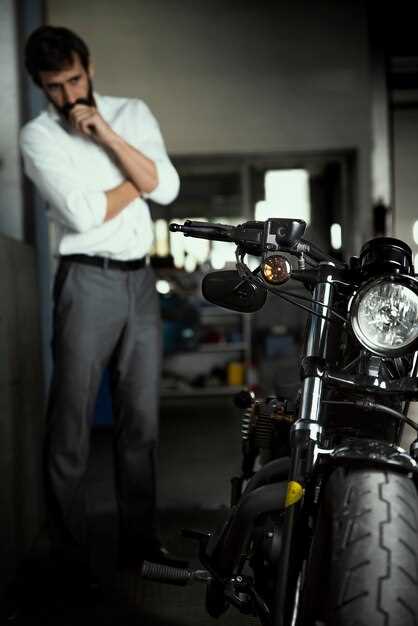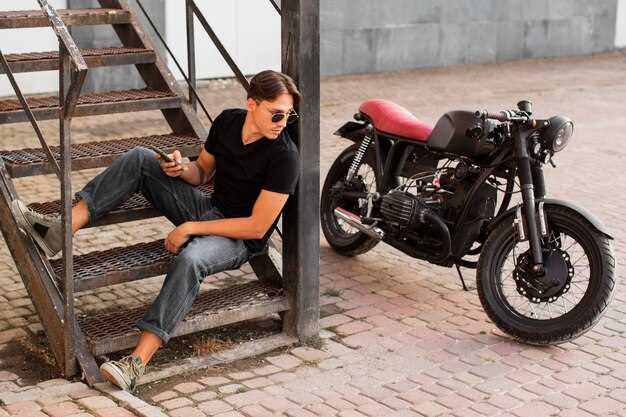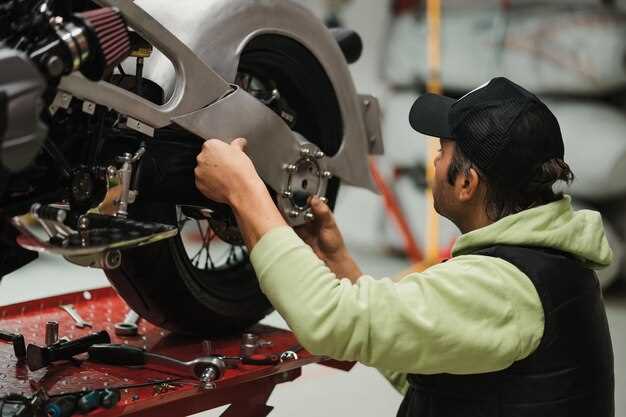
Building your own motorcycle can be an exhilarating journey for any beginner. Whether you’re an experienced mechanic or someone who’s just starting to explore the world of custom bikes, embarking on this project can be both rewarding and challenging. This article will provide you with essential tips to ensure that your motorcycle project unfolds seamlessly, enabling you to create a bike that truly reflects your vision.
One of the most important aspects of starting your custom motorcycle project is understanding the components and tools you’ll need. Familiarizing yourself with the various parts of a bike, from the engine to the frame, will give you the confidence to make informed decisions throughout the building process. Moreover, gathering the right tools before you begin will save you time and frustration in the long run.
In addition to knowing your materials, it is vital to plan your project carefully. Setting clear goals and timelines will help you stay organized and focused, especially if you are new to this endeavor. Remember, taking your time and learning along the way is more valuable than rushing to complete your bike. With the right mindset and preparation, you can transform your ideas into a stunning custom motorcycle that you’ll be proud to ride.
Understanding the Basics of Motorcycle Anatomy
A solid understanding of motorcycle anatomy is essential when embarking on your custom bike project. This knowledge provides the foundation for successful modifications and enhancements. Every motorcycle consists of several key components, each playing a critical role in the overall functioning of the bike.
The frame is the backbone of the motorcycle, determining its shape, stability, and overall design. When customizing, consider the materials and geometry of the frame, as these factors directly affect handling and performance. Choose a frame that aligns with your vision for the bike, whether you aim for a classic look or a modern feel.
The engine is the heart of the motorcycle. Familiarize yourself with its specifications, such as displacement and type, to ensure it matches your performance goals. Whether you opt for a V-twin, single-cylinder, or an inline-four, understanding how the engine integrates with the rest of the machine is vital for tuning and modifications.
The suspension system supports the bike’s weight and provides a smooth ride. When customizing your motorcycle, pay attention to fork types, shock absorbers, and overall suspension geometry. Upgrading these components can enhance handling and comfort, transforming your ride experience.
Braking systems are crucial for safety. Ensure you understand the differences between disc and drum brakes, as well as the importance of brake pads and fluid. Customizing these elements can significantly improve stopping power, which is vital for any custom build.
Wheels and tires not only influence aesthetics but also affect handling and stability. Choose the right size and type of wheel and tire combination that suits the custom style you are aiming for while ensuring compatibility with other components.
Finally, the electrical system, including wiring and lighting, is essential for functionality and safety. Familiarize yourself with the basics of motorcycle electrical systems to effectively customize features such as turn signals, headlights, and instrumentation.
By understanding these fundamental elements of motorcycle anatomy, you’ll gain the confidence to embark on your custom bike project, armed with the knowledge necessary to make informed decisions and create a machine that reflects your personal style and riding needs.
Essential Tools and Equipment for Custom Builds

Starting a custom motorcycle project requires careful consideration of the tools and equipment you will need. For beginners, having the right gear can significantly impact the quality of your build and your overall experience. Here are some essential tools every custom motorcycle enthusiast should consider.
1. Basic Hand Tools
Hand tools are the backbone of any custom build. Invest in a set of quality wrenches, pliers, and screwdrivers. A torque wrench is especially important, as it ensures you apply the correct amount of force when tightening bolts, preventing future mechanical issues.
2. Socket Set
A comprehensive socket set is vital for working on various components of the motorcycle. Look for a set that contains both standard and metric sizes, as motorcycles often have fasteners that require different measurements.
3. Motorcycle Lifts or Stands
Having your bike at the right height can make a world of difference. Motorcycle lifts or stands provide stability and access, allowing you to work comfortably. This is especially important for thorough inspections and detailed work.
4. Cutting and Grinding Tools
Custom builds often involve modifying parts. A metal cutting saw and a grinder are indispensable for shaping and adjusting components. Always use safety gear, such as goggles, to protect your eyes while working.
5. Welding Equipment
If you plan to fabricate parts or modify the frame, consider investing in a welding machine. MIG welding is popular among beginners due to its ease of use and versatility. Proper welding techniques are essential for ensuring the strength and durability of your custom build.
6. Electrical Tools
Modern motorcycles often include complex electrical systems. A multimeter, wire strippers, and soldering iron are crucial for diagnosing issues and making connections. Familiarize yourself with basic wiring concepts to avoid common pitfalls.
7. Safety Gear
Never underestimate the importance of safety gear. Gloves, safety glasses, and a good-quality helmet are critical when engaging in any motorcycle repair or customization. Protecting yourself ensures you can continue your passion for building custom motorcycles safely.
8. Workshop Manual
A workshop manual for your specific motorcycle model provides invaluable information on torque specs, part sizes, and assembly instructions. Referencing a manual can help you avoid mistakes and streamline your project.
By gathering these essential tools and equipment, you can begin your custom motorcycle project with confidence. Remember, every expert was once a beginner, so take your time, learn, and enjoy the process of building your dream bike.
Finding Your Unique Style and Design Inspiration

Embarking on a custom motorcycle project can be an exciting journey, especially for beginners eager to create their unique bike. The first step in this process is to identify your personal style and gather design inspiration that resonates with you. This foundation will guide you in making decisions throughout the build.
Start by exploring various motorcycle styles, such as choppers, cafe racers, or cruisers. Each genre has distinct characteristics that may appeal to different aesthetics. Look through magazines, online forums, and social media platforms for images and designs that catch your eye. This visual research will help clarify what elements you find most inspiring.
Visiting motorcycle shows and attending local bike meets can also provide valuable insight. Observing custom builds in person allows you to appreciate craftsmanship and details that may not be evident in photographs. Engaging with other enthusiasts can also spark new ideas and encourage collaboration, enhancing your creative process.
Remember to consider functionality in your design. The bike should not only look great but also fit your riding style and needs. Balance aesthetics with practical elements, such as comfort, safety, and performance, to ensure that your custom motorcycle is a reflection of both style and purpose.
As you gather ideas, create a mood board or sketch your concepts. This will help visualize your thoughts and serve as a reference throughout the project. Allow your unique personality to shine through your design, and don’t hesitate to mix different styles to create something truly original.
Finally, keep in mind that this creative process should be enjoyable. Embrace the journey of discovering your style and let your passion for motorcycles guide you in building a bike that is uniquely yours.
